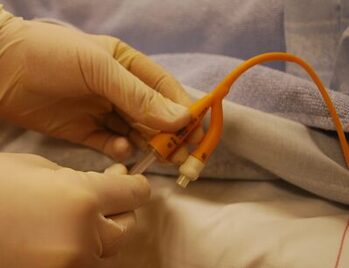- IT
- |
- EN

[Date of last update: february 2021]
Urinary tract infections have long been considered to be the most common "health care associated infections" (HAI), and the vast majority occur after urinary catheter placement [1]. UTI accounts for 19% of HAIs, of which between 43 and 56% are associated with a urethral catheter [2].
It can be defined as CAUTIs - Catheter Associated Urinary Tract Infections - a urinary tract infection with positive culture found in patients with indwelling urethral catheters for at least 2 calendar days [3].
According to the CDC Atlanta (2017) approximately 75% of hospital-diagnosed urinary tract infections are associated with urinary catheterization, and it is known that between 15 and 25% of hospitalized patients undergo catheterization while in hospital [4].
Bacteriuria develops in approximately 30% of catheterized patients after 2-10 days, 24% of these will develop symptoms of CAUTI. About 3.6% of people with CAUTI develop life-threatening secondary infections, such as bacteremia or sepsis, for which mortality rates range from 10% to 33% [2].
Catheter-related urinary tract infection it is associated with prolonged hospitalization, readmission and increased mortality, particularly in at-risk patients who are immunocompromised, elderly and diabetic [2].
[1] Meddings, J. K. (2013). Making health care safer II: an updated critical analysis of the evidence for Patient Safety Practices. AHRQ Evidence Report 211, cap,9.
[2] H.P. Lovedaya, J. W. (2014). National Evidence-Based Guidelines for Preventing Healthcare-Associated Infections in NHS Hospitals in England. Journal of Hospital Infection.
[3] Talha H. Imam, M. (2020, febbraio). msdmanuals. Tratto da https://www.msdmanuals.com
[4] Hollenbeak, C. S. (2018). The attributable cost of catheter-associated urinary tract infections in the United States: A systematic review. American Journal of Infection Control,volume 46, Issue 7, 751-757.